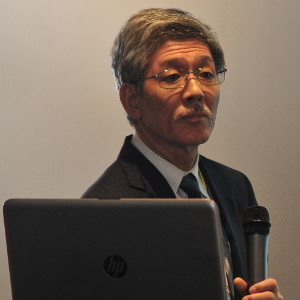Title : Lesson from the Hereditary cerebral small vessel disease
Abstract:
Hereditary Cerebral Small Vessel Disease (CSVD) can be divided into three types. autosomal dominant, autosomal recessive and X-linked. While CADASIL is most common in autosomal dominant type, CARASIL is the only one recessive type. CADASIL and CARASIL have a couple of similar characters, such as juvenile onset stroke, repeated subcoritcal infarcts and cerebral white matter lesion and vascular dementia. Otherwise, there are different characters, such as frequent consanguineous marriage, alopecia, and spondylosis in CARASIL. In addition, while CADASIL exists in all over the world, CARASIL is reported from only Japan and Korea.
HTRA1, regulating TGF-beta1 signaling, is detected as a causative gene of CARASIL. We found a mild CARASIL phenotype caused by the heterozygous mutation of HTRA1. These cases suggested that the increase of TGF-beta1 signaling by the mutation of HTRA1 can induce the accumulation of extracellular matrix including fibronectin and versican.
The aggregation of the extracellular domain of NOTCH3 (N3ECD) is observed by immunostaining or electron microscopy in CADASIL. The complex of N3ECD and TIMP3 can induce the accumulation of extracellular matrix. Both diseases suggested that accumulation of extracellular matrix may be important for developing CSVD.
Audience take away:
We can learn the pathomechanism of cerebral small vessel disease from hereditary disease. The audience can get a hint of new approach for treating sporadic cerebral small vessel disease.




